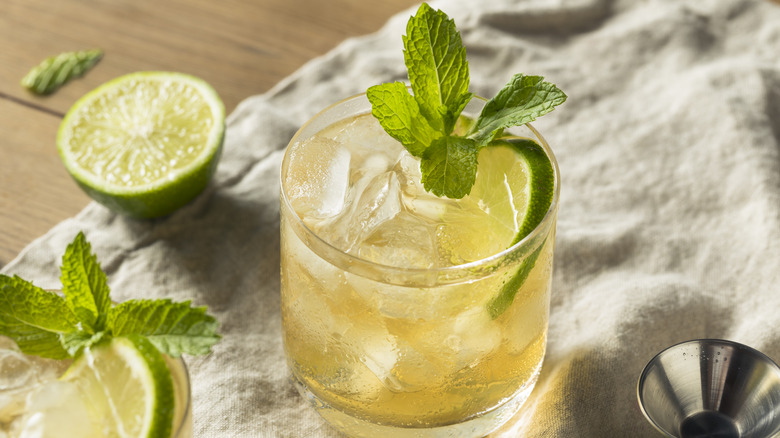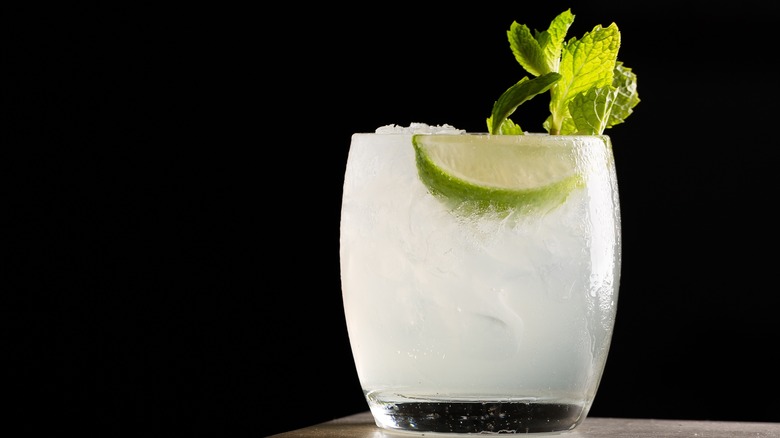The Foghorn Is The 1930s Drink Reminiscent Of A Moscow Mule
When it comes to cocktails with easygoing likeability, it's hard to beat the Moscow Mule. The combination of vodka, ginger beer, and lime — all mixed in an icy cold copper mug — is about as approachable as alcoholic drinks get. If you're keen for a little more spirit flavor in a similar format, turn to the Foghorn.
The sling is made with gin, also mixed with ginger beer and lime juice, and classically served in a short rocks glass. Traditionally, the liquor base is old Tom gin, an old-school gin style made with a small amount of added sugar and barrel-aged for a short duration. Its palate is sweeter and softer but quintessential of Britsh gin, making it a beautiful pairing with ginger beer.
Other popular gin brands also meld well into the cocktail — classics like Hayman's London Dry reveal a bouquet of floral flavors. So grab your favorite gin bottle to craft a new take on this 1930s sling.
The Foghorn melds gin and ginger beer into a delicious cocktail
As with many cocktails, the Foghorn's origins are uncertain, but it's clear it's been around for a while. Some cite it was popularized by the influential Waldorf Astoria Hotel in New York City. The establishment operated pre-prohibition and put many now iconic cocktails on the map.
The Foghorn first appeared in print in W.J. Tarling's "Café Royal Cocktail Book," published in 1937. The influential compendium focuses on drinks in the pre-World War II London drinking scene, but it's possible the Foghorn came to England via New York.
Regardless of who made the cocktail first, it has a forgiving formula that beautifully showcases gin. The pungent citrus and ginger mixer softens out the gin's boozy flavor. If you're keen on less peppery notes, consider the difference between ginger beer and ale — the latter will offer a smoother drinking experience. For a less spirit-forward rendition, add more ginger beer and serve the drink in a tall glass, crafting a more highball-like creation.

